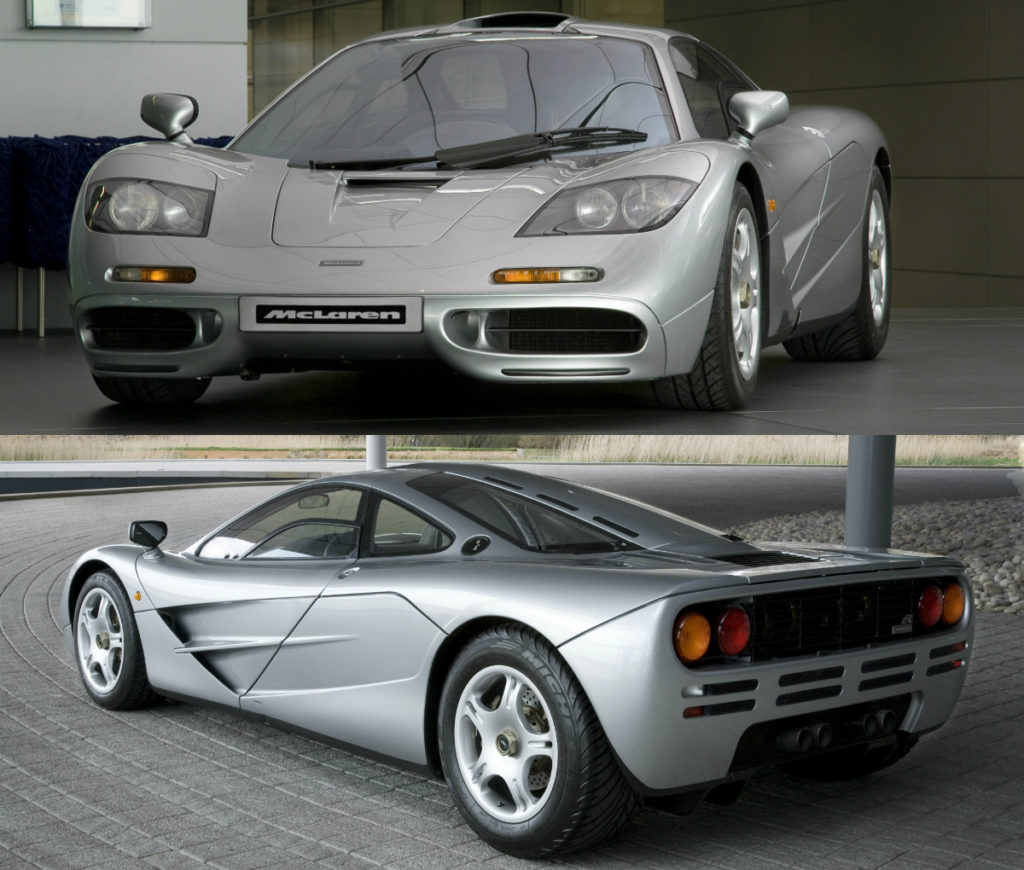 From the McLaren F1 project’s inception, it was decided to utilise both a purpose-designed transmission and a high-performance 12-cylinder naturally aspirated engine of great efficiency, all integrated from the beginning into the overall F1 package. While offering great power, the engine also had to meet worldwide emission and green requirements since the McLaren F1’s concept combines ultra-modern technology with the most noble Grand Touring car values.
From the McLaren F1 project’s inception, it was decided to utilise both a purpose-designed transmission and a high-performance 12-cylinder naturally aspirated engine of great efficiency, all integrated from the beginning into the overall F1 package. While offering great power, the engine also had to meet worldwide emission and green requirements since the McLaren F1’s concept combines ultra-modern technology with the most noble Grand Touring car values.
The resultant naturally aspirated V12 engine for the McLaren F1 has been purpose-built by BMW Motorsport in Munich, Germany, to meet all these demands. Commissioned by McLaren Cars, BMW Motorsport’s design and development team has been led by their universally acclaimed senior engineer Paul Rosche.
The McLaren F1’s 6.1-litre 60-degree V12 engine is an entirely new four-cam, 48-valve unit of extraordinarily compact design, sharing nothing with BMW’s unrelated smaller-capacity production-line V12.
The BMW Motorsport S70/2 V12 engine for the McLaren F1 is a unique design, individually hand-assembled and dyno-tested for each owner to produce one of the highest specific outputs for a large-capacity naturally aspirated engine in production sports car history.
Seeking performance with clean emissions, the engine possesses extremely efficient heads, continuous variable inlet valve timing and an emission control system incorporating secondary air supply and four catalytic converters with Lambda exhaust gas analysis control.
This quad-cam, 48-valve, 60-degree V12 engine’s 86mm bore and 87mm stroke displace 6064cc. Compression ratio is 10.5:1, and with its chain-driven DOHC valvegear and TAG Electronic Systems fuel injection and engine management, power output is over 550bhp at 7500rpm, coupled to a peak torque in excess of 600Nm between 4000 and 7000rpm, with no less than 350Nm at only 1500rpm.
The load-bearing lightweight cylinder block is cast in aluminium alloy with Nakasil coating. BMW Motorsport’s renowned engine weight- and size-reducing technology has paid handsome packaging dividends. In fact, this 6.1-litre V12 is little larger than current 3.5-litre Formula 1 racing engines.
Lightweight magnesium alloy castings provide the sump, oil-pump and variable valve-timing housings, cam-carriers and cam-covers. The airbox is made of carbon composite, while the voluminous exhaust catalysor system is cased in super-thin, ultra-high-temperature resistant Inconel sheet just 0.8mm thick and doubling as the F1’s rear crash structure. Dry-sump lubrication ensures adequate flow under high cornering loads and minimises Centre of Gravity height. Cooling is handled by individual water pumps to each cylinder bank.
On the switch panel beside the driver’s right hand, a flick-up trigger shield exposes the neat red starter button beneath. Press that button and 6.1-litres of ultra-modern V12 will fire into life behind the McLaren F1 driver’s shoulders.
Wheelbase length in most mid-engined sports car designs is increased by conventional clutch and final-drive arrangements forcing the drive-output centre rearwards. Until now, all attempts to minimise wheelbase length, such as siting the gearbox and final-drive beneath the engine, have compromised handling, weight or efficiency.
In conjunction with Traction Products Inc, McLaren Cars has imaginatively solved such problems, with the McLaren F1’s final-drive gear offset alongside its clutch, absolutely minimising engine/drive output centreline separation. This layout within a transverse-shaft gearbox, already inherently short front-to-rear, provides an exceptionally compact assembly within an extremely rigid cast magnesium casing accepting major rear suspension loadings.
The F1 is also the first production car to adopt current Formula 1 practice by featuring a 200mm-diameter aluminium flywheel and carbon clutch assembly. Their extremely low mass and inertia greatly enhance engine response and efficiency, and also save weight.
The 6-speed gearbox has a full synchromesh gearchange with helical gears for optimum strength, quiet high-speed running and quick, efficient gearchanging. Further features include a sophisticated lubrication system, a remote clutch-operating mechanism tailored to provide optimum pedal weight and action, and an integrated purpose-designed starter system.
The gear ratios offer a close 5-speed cluster for 0-257km/h, along with a 6th speed presenting a comfortable, peaceful and long-striding 53km/h per 1000rpm cruising gear, plus a top speed capability of well over 321km/h.
The final-drive assembly also features a limited-slip differential, while purpose-made constant-velocity jointed high-grade alloy-steel driveshafts are used. 
Read the description of the McLaren F1 by Gordon Murray, the project’s technical director.
Read about how the driver and the F1 become one in the McLaren.












